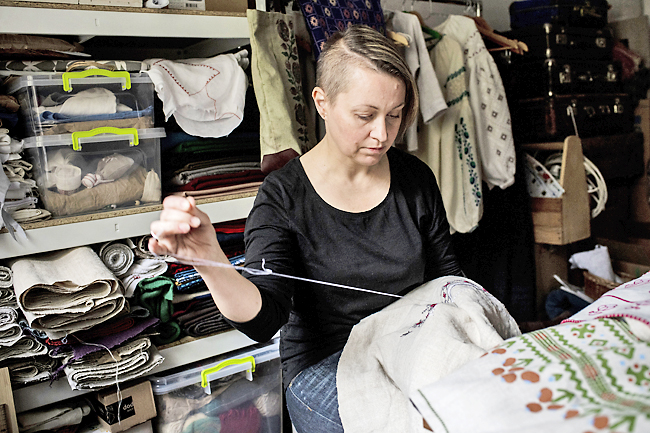Kasia Strek & Max Bearak
THE WASHINGTON POST – There was a time when Ukraine’s traditional clothing, known for its intricate embroidery, was so specialised that most villages had designs of their own. What people wore could identify where they were from.
Now the Ukrainian conflict is fuelling new interest in the unique patterns and histories that are literally a part of Ukraine’s fabric.
On Thursday, Ukrainians observed an emotional Vyshyvanka Day, the annual celebration of the country’s traditional clothing, amid the ongoing conflict.
The artful creation of the clothing involves centuries-old techniques – threads, for example, coloured with natural dyes, from elderberry, buckthorn, oak bark.
Top Ukrainian designers are reviving the tradition, inspired by those who have kept the timeworn methods alive, especially in rural areas.
“For me, in Ukraine, we have such a rich cultural heritage, and so much of it was hidden or neglected for decades,” said Artem Klimchuk, 35, a designer in Kyiv who embroidered a shirt worn by Ukraine’s first lady Olena Zelenska. “It is my mission to teach people about it, and I do it through my work.”


The designs are often intricate and brightly coloured. They represent scenes from Ukraine’s varied geography, which spans forests and steppe and river canyons.
Many of the keepers of Ukraine’s traditional clothing methods are older women, who receive little support for or income from their embroidering. Olena Skrypka, 60, collects and researches traditional clothing at her home on the outskirts of Kyiv.
“There was a collection from the late 19th Century. It was the first time I saw white-thread-on-white-fabric embroidery. I was amazed,” she said. “The Mona Lisa painting did not impress me more.”
That white-on-white pattern was common on clothes worn by people who couldn’t afford dye. In Ukraine’s northern Chernihiv region, people adopted wintry patterns to accompany the white colour.
“Our tradition means no two shirts are alike,” said member of the National Union of Folk Masters Olha Kostiuchenko, who is from the region.
“When I close my eyes, I see this one old shirt. It was from Chernihiv, white-on-white, what we call the frost pattern. The name came from the patterns on glass in winter. It is love, and that’s it.”
Many Ukrainians see Russia as a colonial power that for centuries tried to suppress Ukrainian identity and subsume it into mainstream Russian culture. The word vyshyvanka is controversial here – to Ukrainians, it suggests a Soviet-era flattening of the country’s diverse styles, and many have sought to change the name of the celebration. On Thursday, President Volodymyr Zelensky referred to it as Embroidered Shirt Day.
Under the shadow of conflict, Ukrainians are also revisiting and reviving the country’s art, music and language.
Gala Privalova, 56, an architect and interior designer, has opened her extensive collection of Ukrainian art, including embroidered clothing, to visitors.
“I’m taking responsibility to show how tomorrow can look like and what we are fighting for,” she said. “Our art and our culture are part of it.”
Culture is one thing Ukrainians are fighting for, but it also helps some get through the conflict itself.
When invasion forces moved through the town of Borodyanka, outside Kyiv, Halyna Khalchenya, 65, was trapped in her home. Bombs rained down; her son’s house was destroyed.
Eight family members moved into her small apartment.
“Whenever I was stressed or hesitant, I did embroidery,” she said. “When my kids were younger, I would put them to bed, and I would continue doing the embroidery until I was so tired that I would put a needle in my finger.”






